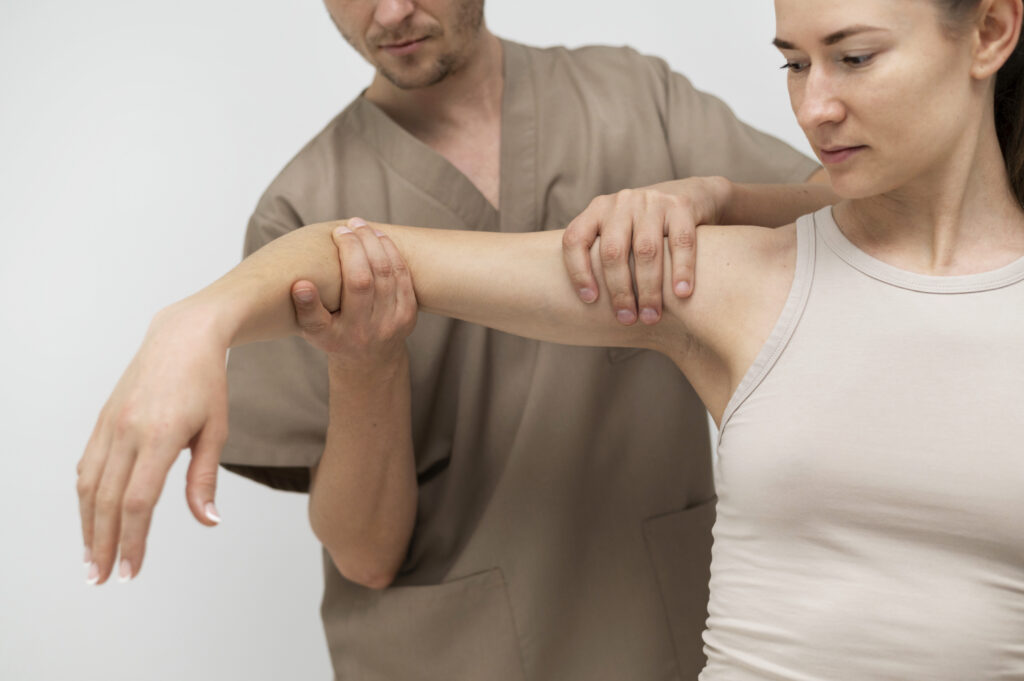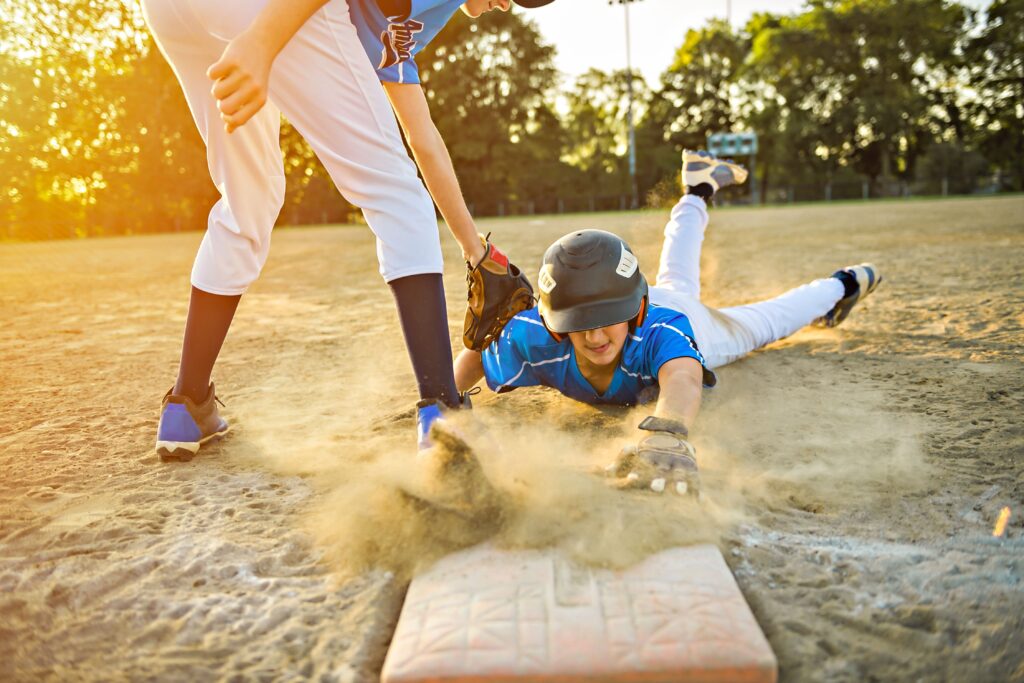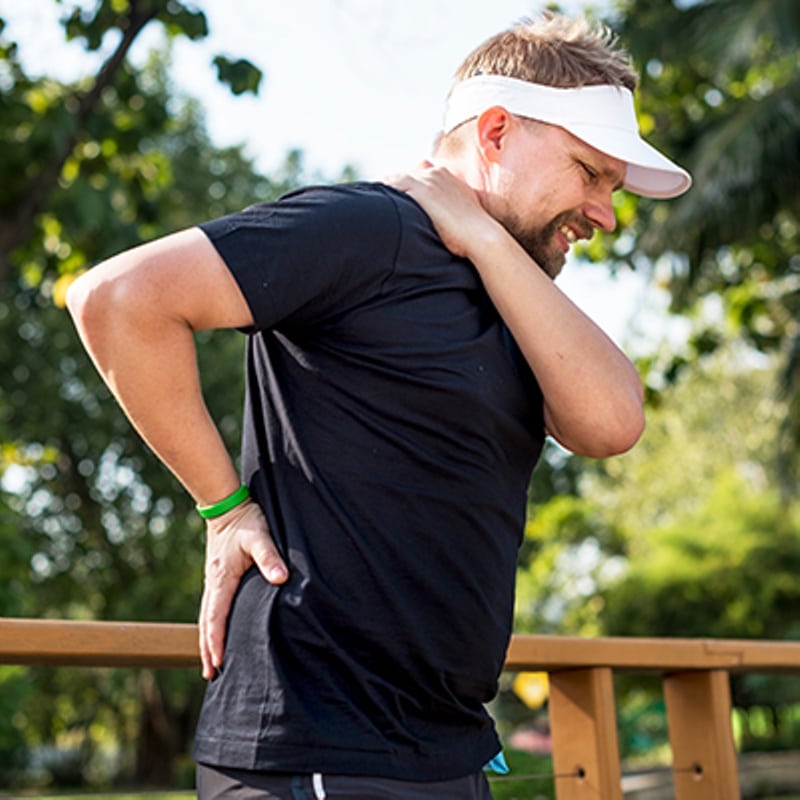When you're dealing with a sports injury in Delray Beach, knowing your treatment options can greatly affect your recovery. From advanced physical therapy techniques to holistic approaches like acupuncture, each method plays an essential role in getting you back in the game. You might also find benefits in chiropractic adjustments and innovative therapies like PRP. But what about the lesser-known strategies that could enhance your recovery even further? Exploring these options might just provide the edge you need to return to peak performance.
Physical Therapy Techniques
When you face a sports injury, effective physical therapy techniques can make all the difference in your recovery. It's essential to start with a personalized assessment, where your therapist evaluates your specific injury, mobility, and strength. This assessment lays the groundwork for a tailored treatment plan that targets your unique needs.
One of the key techniques you might encounter is therapeutic exercise. These exercises not only enhance your strength but also improve your flexibility and balance. Your therapist will guide you through a series of movements designed to rebuild muscle function while minimizing pain.
Another significant method is manual therapy, which involves hands-on techniques to alleviate pain and restore movement. This can include joint mobilization and soft tissue manipulation, helping you regain range of motion.
Another technique you may experience is neuromuscular re-education. This approach focuses on re-establishing the connection between your muscles and nervous system, enabling you to move more effectively.
In addition, modalities like ultrasound or electrical stimulation may be utilized to reduce inflammation and promote healing.
As you progress through your physical therapy, your therapist will constantly adjust your treatment plan based on your recovery. This guarantees that you're always challenged yet not overwhelmed.
Staying committed to your therapy sessions and practicing at home is essential. With consistent effort and the right physical therapy techniques, you'll be well on your way to returning to your favorite sports activities stronger than ever.
Massage Therapy Benefits
Massage therapy offers numerous benefits for athletes recovering from sports injuries. It helps reduce muscle tension and promotes relaxation, which is vital when you're dealing with pain or discomfort. By increasing blood circulation, massage therapy accelerates the healing process, delivering essential nutrients and oxygen to injured tissues.
When you receive regular massage therapy, you can improve your flexibility and range of motion. This is especially important for athletes, as tight muscles can hinder performance and increase the risk of future injuries. Additionally, massage therapy can alleviate soreness and stiffness, making it easier for you to return to your training routine.
Another significant benefit is the reduction of scar tissue formation. After an injury, scar tissue can develop and affect your mobility. Therapeutic massage techniques help break down this tissue, promoting better movement and function. You'll find that this can make a substantial difference in your overall recovery.
Moreover, massage therapy can enhance your mental well-being. Dealing with an injury can be frustrating and isolating, but the soothing effects of massage can help reduce anxiety and improve your mood. Feeling relaxed and rejuvenated can motivate you to stick to your rehabilitation plan.
Incorporating massage therapy into your injury recovery regimen can lead to quicker healing, enhanced physical performance, and improved mental health.
Chiropractic Adjustments
Chiropractic adjustments can play a vital role in your recovery from sports injuries.
These techniques help realign your spine and joints, reducing pain and improving mobility.
As you explore the recovery and rehabilitation process, understanding how chiropractic care fits in can make a significant difference in your overall healing.
Benefits of Chiropractic Adjustments
Chiropractic adjustments offer numerous benefits for those dealing with sports injuries. By aligning your spine and joints, these adjustments can help restore your body's natural function and improve your overall mobility. You'll likely experience reduced pain, making it easier to engage in your favorite activities without discomfort.
Additionally, chiropractic care promotes faster recovery times. By enhancing blood flow and reducing inflammation, adjustments can speed up the healing process, allowing you to get back in the game sooner. You might also find that chiropractic treatments improve your flexibility and range of motion, which are essential for ideal athletic performance.
Another key benefit is the prevention of future injuries. Regular adjustments can help maintain proper alignment, reducing the risk of strains and sprains. You'll not only feel better but also improve your body's resilience against the wear and tear of sports.
Finally, chiropractic adjustments can enhance your overall well-being. By reducing stress and improving your nervous system function, you'll feel more energized and focused, helping you perform at your best.
Embracing chiropractic care can be a game-changer for your sports injury recovery and overall athletic performance.
Techniques Used in Care
While various techniques exist to address sports injuries, many practitioners rely on specific chiropractic adjustments to achieve excellent results. These adjustments focus on realigning the spine and joints to restore proper function and alleviate pain.
When you undergo chiropractic care, your practitioner might use methods like the diversified technique, which involves quick, controlled thrusts to correct misalignments, or the activator method, where a small handheld device delivers gentle impulses to specific areas.
You may also experience soft tissue techniques, such as myofascial release or trigger point therapy, to relieve muscle tension and improve mobility. These methods work in tandem with adjustments to target the underlying issues contributing to your pain.
Your chiropractor might incorporate stretching and mobilization techniques, helping you regain range of motion and flexibility. In addition, they often provide personalized exercise recommendations tailored to your specific condition, ensuring you strengthen the affected areas.
Ultimately, these chiropractic adjustments and techniques aim to promote superior healing and get you back to your favorite activities faster. You'll feel the benefits as your body regains balance, stability, and function.
Recovery and Rehabilitation Process
After experiencing a sports injury, the recovery and rehabilitation process plays an essential role in restoring your health and performance. One of the most effective methods during this phase is chiropractic adjustments. These adjustments help realign your spine and joints, reducing pain and improving mobility.
When you visit a chiropractor, they'll assess your injury and develop a tailored treatment plan. This plan often combines adjustments with other modalities, such as physical therapy and exercise. By addressing the underlying issues, chiropractic care not only accelerates your healing but also prevents future injuries.
As you progress, your chiropractor will guide you through specific exercises to strengthen the affected area and enhance overall stability. These exercises are critical for regaining your athletic performance.
It's important to stay committed to your rehabilitation process. Regular sessions with your chiropractor can help maintain your progress and guarantee that you're on the right track.
Acupuncture for Pain Relief
Acupuncture offers a holistic approach to pain relief, making it an appealing option for athletes recovering from injuries. This ancient practice involves inserting thin needles into specific points on your body, promoting natural healing and alleviating pain. Many athletes have found acupuncture to be a valuable addition to their recovery regimen, as it not only targets pain but also addresses underlying issues.
Here are some benefits of acupuncture for pain relief:
- Reduces inflammation: Acupuncture can help decrease swelling and promote healing in injured areas.
- Improves circulation: Enhanced blood flow means more oxygen and nutrients reach damaged tissues, speeding recovery.
- Relieves muscle tension: By targeting trigger points, acupuncture relaxes tight muscles and reduces discomfort.
- Balances energy: Acupuncture helps restore the flow of Qi (energy) in your body, leading to overall well-being.
- Decreases reliance on medication: With effective pain relief, you may rely less on painkillers, reducing potential side effects.
For you, acupuncture might be a game-changer in your recovery journey. It's often used in conjunction with other therapies, creating a thorough approach to healing.
Whether you're dealing with a sprain, strain, or chronic pain, this alternative treatment can provide significant relief. Before you start, be sure to consult with a qualified practitioner who understands sports injuries and can tailor the treatment to your specific needs.
Embracing acupuncture could be the key to getting back in the game faster and stronger.
Cold and Heat Therapy
When you're dealing with a sports injury, knowing the right time to use cold or heat therapy can make a big difference in your recovery.
Cold therapy helps reduce swelling and numb pain, while heat therapy promotes blood flow and relaxes tight muscles.
Let's explore the benefits of each method and how to apply them correctly for best results.
Benefits of Cold Therapy
Cold therapy offers several benefits for sports injuries, making it an essential tool in your recovery arsenal. When you apply cold to an injured area, you can effectively manage pain and inflammation, promoting a quicker healing process.
Here are some key benefits of using cold therapy:
- Reduces Swelling: Cold constricts blood vessels, minimizing fluid buildup and swelling around the injury.
- Alleviates Pain: The numbing effect of cold can considerably reduce pain, allowing you to regain mobility.
- Decreases Muscle Spasms: Cold therapy helps relax muscles, preventing unnecessary spasms that can prolong your recovery.
- Prevents Further Injury: By reducing inflammation and pain, you're less likely to exacerbate your injury during the healing process.
- Enhances Recovery: Regular application of cold therapy can speed up your overall recovery time, getting you back to your sport sooner.
Incorporating cold therapy into your treatment plan allows you to take control of your recovery journey.
Whether you're dealing with a sprain, strain, or other sports-related injuries, cold therapy is a simple yet powerful method to aid in your healing process.
Advantages of Heat Therapy
Heat therapy plays an essential role in the recovery process for sports injuries, complementing the benefits of cold therapy. When you apply heat to an injured area, it increases blood flow, which helps deliver essential nutrients and oxygen to the tissues. This improved circulation can accelerate the healing process and reduce muscle stiffness, making it particularly beneficial for chronic injuries or muscle strains.
You'll find that heat therapy can also relax tight muscles and alleviate pain, providing a soothing effect that enhances your overall comfort. This is especially helpful before engaging in physical activity, as it prepares your muscles for movement and can help prevent further injuries.
Moreover, heat therapy can be an effective way to manage pain related to conditions like arthritis, allowing you to maintain mobility and continue your daily activities.
Just remember that using heat therapy isn't suitable for all injuries, particularly those with swelling or inflammation. Listening to your body and knowing when to use heat can make a significant difference in your recovery journey.
Proper Application Techniques
To guarantee you get the most out of cold and heat therapy, it's crucial to apply them correctly.
Whether you're dealing with swelling or muscle tension, understanding proper application techniques can greatly impact your recovery.
Here's how to effectively use cold and heat therapy:
- Cold Therapy: Apply within the first 48 hours of an injury to reduce swelling.
- Heat Therapy: Use on chronic injuries or muscle soreness to promote blood flow.
- Timing: Limit application to 15-20 minutes at a time to prevent skin damage.
- Barrier: Always use a cloth or towel between the ice/heat source and your skin to avoid burns or frostbite.
- Monitor: Pay attention to your body's response; if you feel excessive pain or discomfort, stop immediately.
Platelet-Rich Plasma Therapy
Platelet-rich plasma (PRP) therapy has gained popularity as an innovative treatment for sports injuries, harnessing the body's natural healing abilities. If you're dealing with a sports-related injury, PRP therapy might be a game-changer for you. This treatment involves extracting a small amount of your blood, processing it to concentrate the platelets, and then injecting this enriched plasma into the injured area.
The platelets in PRP contain growth factors that can accelerate healing, promote tissue regeneration, and reduce inflammation. You might find this particularly beneficial for conditions like tendonitis, ligament sprains, and even joint pain.
The procedure is relatively straightforward and often requires minimal downtime, allowing you to return to your activities sooner than with traditional treatments.
One of the key advantages of PRP therapy is that it uses your body's own cells, which minimizes the risk of allergic reactions or complications. If you're considering this option, it's essential to consult with a qualified healthcare provider who specializes in sports medicine. They can evaluate your specific injury and determine if PRP therapy is the right fit for you.
As with any treatment, results can vary. While many athletes experience significant improvements in pain and function after PRP therapy, it may not be a one-size-fits-all solution.
Be sure to discuss your expectations and any concerns with your provider to make an informed decision about your treatment plan.
Strength and Conditioning
When it comes to enhancing athletic performance and preventing injuries, strength and conditioning play an indispensable role. These practices aren't just for professional athletes; they're essential for anyone looking to stay active and healthy.
By focusing on building strength, flexibility, and endurance, you can improve your overall fitness and reduce the risk of injuries during physical activities.
Here are some key benefits of strength and conditioning:
- Increases muscle strength: Stronger muscles support your joints, reducing the chance of injuries.
- Enhances flexibility: Improved flexibility helps with range of motion, allowing you to perform movements with better form.
- Boosts endurance: Greater stamina enables you to maintain performance levels longer, whether in sports or everyday activities.
- Improves balance and coordination: These skills are critical for preventing falls and injuries, especially as you age.
- Promotes faster recovery: A well-conditioned body recovers more quickly from workouts and injuries, helping you get back to your routine sooner.
To effectively incorporate strength and conditioning into your routine, consider working with a qualified trainer who can tailor a program to your specific needs.
This personalized approach will guarantee you're targeting the right muscle groups and using proper techniques. Remember, consistency is key; regular training will yield the best results.
Bracing and Support Devices
Bracing and support devices play an essential role in injury prevention and rehabilitation for athletes and active individuals alike. These tools can help stabilize joints, reduce pain, and promote healing when you're recovering from an injury or trying to prevent one.
Whether you're dealing with a sprained ankle, a strained knee, or chronic conditions like tendonitis, the right brace can make a significant difference. When you wear a brace, you're providing additional support to your injured area, which can help maintain proper alignment and reduce the risk of further injury.
This is especially important during high-impact activities or sports where you're more susceptible to re-injuring yourself. A well-fitted support device can enhance your confidence, allowing you to engage in physical activities without the constant worry of aggravating your injury.
Moreover, these devices come in various forms, including knee braces, ankle supports, and wrist splints. Each type is designed to address specific needs, so it's vital to consult a healthcare professional to determine which option's best for your situation.
They can help you find a brace that offers the right level of support without compromising your mobility. Incorporating bracing and support devices into your recovery or training regimen can be a game-changer.
Nutritional Support for Recovery
Proper nutritional support is essential for speeding up your recovery from sports injuries. The right foods can promote healing, reduce inflammation, and restore energy levels. By focusing on a balanced diet, you'll give your body the nutrients it needs to bounce back stronger.
Here are some key nutritional elements to take into account during your recovery:
- Protein: Important for repairing tissues and building muscle. Incorporate lean meats, fish, eggs, or plant-based proteins like beans and lentils.
- Omega-3 Fatty Acids: These help reduce inflammation. Include sources like fatty fish, flaxseeds, and walnuts in your meals.
- Vitamins and Minerals: Vitamins C and D, as well as calcium and magnesium, play significant roles in bone health and recovery. Eat plenty of fruits, vegetables, and dairy or fortified alternatives.
- Hydration: Staying hydrated is essential for ideal recovery. Drink water consistently and think about electrolyte-rich beverages if you're sweating a lot.
- Antioxidants: Foods rich in antioxidants can help combat oxidative stress caused by injury. Berries, dark chocolate, and green leafy vegetables are excellent choices.
Conclusion
In Delray Beach, you've got access to a variety of exceptional sports injury treatments that can help you recover effectively. Whether it's through personalized physical therapy, soothing massage, or innovative PRP therapy, each option plays a critical role in your healing journey. Don't forget the importance of nutrition and proper support devices—they're essential for a swift return to peak performance. Embrace these techniques, and you'll be back to doing what you love in no time!



